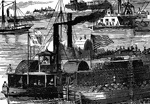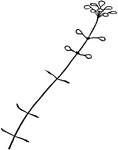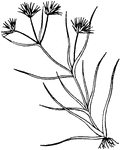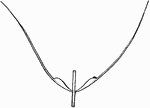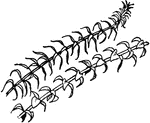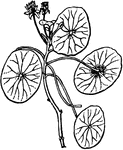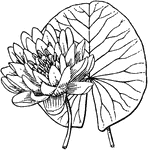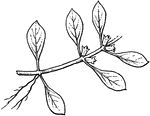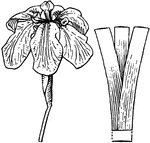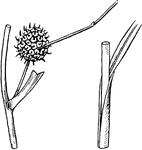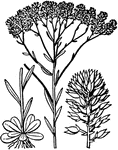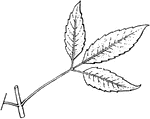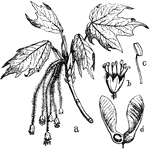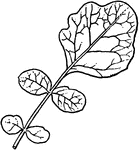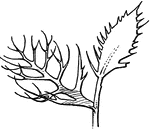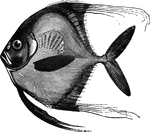
Blepharis
"Five to six inches long; blueish-white above, shiny beneath; found, though rarely, on the American…

Common Cod
"It is two to four feet long, and weighs from two to seventy spounds; the general color is greenish…
Burbot
"Lives in slow-running rivers, is one to two feet long, conceals itself under stones like an eel, and…

Salmon
"The salmon two to four feet long, and weighs ten to twelve pounds, though it has been taken of eights…
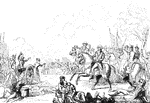
Monmouth
"The field of Monmouth. In the picture here given, the chief is seen most prominently on his white charger,…

Woodhull's Monument
"Woodhull's Monument. This monument stands on the south side of the church. It is of white marble, about…

Common Carp
"It is ten to forty inches long, and sometimes attains the weight of a hundred pounds; the general color…
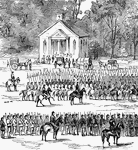
Battle at Willis Church
"Battle at Willis Church, Monday, June 30th, 1862- the Federal forces, under General Heintzelman, engaged…
Burning of the White House
"Burning of the White House- the Federal troops, by command of General McClellan, abandoning their position…
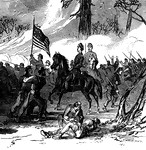
Battle of Shiloh
"Battle of Shiloh, or Pittsburg Landing, left wing- the woods on fire during the engagement of Sunday,…
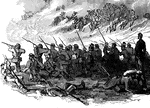
Battle of Shiloh
"Battle of Shiloh, or Pittsburg Landing, left wing- the woods on fire during the engagement of Sunday,…
!["Siege of Petersburg- the Ninth Corps charging on the enemy's works after the explosion of the mine, July 30th, 1864. Immediately after the explosion of the mine a hundred cannons opened along the Federal front, and at half-past five the Ninth Corps charged, carrying the fort with a part of the line on each side. The Second Division, which was in the centre, advanced and carried the second line a short distance beyond the fort, and rested, holding ground with the utmost determination. It was at the time the [African American] Division, under General White, was pushed forward and ordered to charge and carry the crest of the hill, which would have decided the contest. The troops advanced in good order as far as the first line, where they received a galling fire, which checked them, and although quite a number kept on advancing, the greater number seemed to become utterly demoralized, part taking refuge in the fort, and the remainder running to the rear as fast as possible. They were rallied and again pushed forward, but without success, the greater part of the officers being killed or wounded."— Frank Leslie, 1896](https://etc.usf.edu/clipart/13900/13915/petersburg_1_13915_mth.gif)
Siege of Petersburg
"Siege of Petersburg- the Ninth Corps charging on the enemy's works after the explosion of the mine,…
!["Siege of Petersburg- the Ninth Corps charging on the enemy's works after the explosion of the mine, July 30th, 1864. Immediately after the explosion of the mine a hundred cannons opened along the Federal front, and at half-past five the Ninth Corps charged, carrying the fort with a part of the line on each side. The Second Division, which was in the centre, advanced and carried the second line a short distance beyond the fort, and rested, holding ground with the utmost determination. It was at the time the [African American] Division, under General White, was pushed forward and ordered to charge and carry the crest of the hill, which would have decided the contest. The troops advanced in good order as far as the first line, where they received a galling fire, which checked them, and although quite a number kept on advancing, the greater number seemed to become utterly demoralized, part taking refuge in the fort, and the remainder running to the rear as fast as possible. They were rallied and again pushed forward, but without success, the greater part of the officers being killed or wounded."— Frank Leslie, 1896](https://etc.usf.edu/clipart/13900/13917/petersburg_2_13917_mth.gif)
Siege of Petersburg
"Siege of Petersburg- the Ninth Corps charging on the enemy's works after the explosion of the mine,…
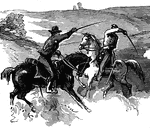
Old Church
"Desperate skirmish at Old Church, near Tunstall's Station, VA., between a squadron of the Fifth United…

Old Church
"Desperate skirmish at Old Church, near Tunstall's Station, VA., between a squadron of the Fifth United…
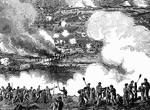
Battle of White Oak Swamp Bridge
"Battle of White Oak Swamp Bridge, Monday June 30th, 1862- Ayres's, Mott's and Randall's batteries checking…

Battle of White Oak Swamp Bridge
"Battle of White Oak Swamp Bridge, Monday June 30th, 1862- Ayres's, Mott's and Randall's batteries checking…
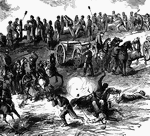
Battle of White Oak Swamp Bridge
"Battle of White Oak Swamp Bridge, Monday June 30th, 1862- Ayres's, Mott's and Randall's batteries checking…
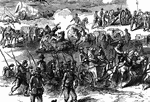
Battle of White Oak Swamp Bridge
"Battle of White Oak Swamp Bridge, Monday June 30th, 1862- Ayres's, Mott's and Randall's batteries checking…

Bishop's mitre shell
"Noted for a very long proboscis, sometimes twice the length of the shell. The latter is turretted,…
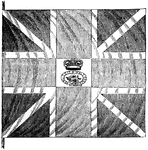
British Flag
"British flag. This is a representation of one of the flags surrendered at Yorktown, and presented to…

Wentle-trap
"The shell is mostly white and lustrous; turreted and many-whorled; the animal has a proboscis-like…
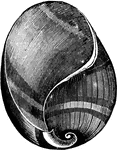
Bulla velum
"The B. velum is very elegant, and of a light-brown color; the apex and base are both white,…

Washington's Head-Quarters
"Washington's head-quarters. The house occupied by Washington while the army was at White Plains is…

Bronx
"Place where the British crossed the Bronx. This view is from the southeastern side of the Bronx, a…

Acanthus
"A genus of small herbaceous plants of southern Europe and Africa; they have spinosely toothed leaves,…

Acanthus
"A genus of small herbaceous plants of southern Europe and Africa; they have spinosely toothed leaves,…

Acanthus
"A genus of small herbaceous plants of southern Europe and Africa; they have spinosely toothed leaves,…

Nymphoides
Leaves small, mostly less than 15cm. long, heart-shaped; flowers white and less than 2.5cm across.
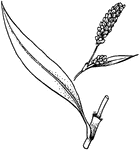
Polygonum
Stems with a sheath just above attachment point of leaf; flowers individually small, white to pink.
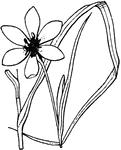
Nemastylis
Flowers violet, over 3cm scross; leaves equitant at base; that is coming in two ranks, making the base…
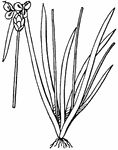
Xyris
Leaves smaller, rigid; small yellow flowers gathered in dense heads at top of naked stalk, each subtended…

Sagittaria
Leaves from base of scape bearing evident white flowers in racemes; roots without crss-constrictions.
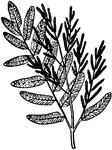
Osmunda
Spores borne on terminal modified leaves; divisions of the leaf larger, more than 2 cm long.

